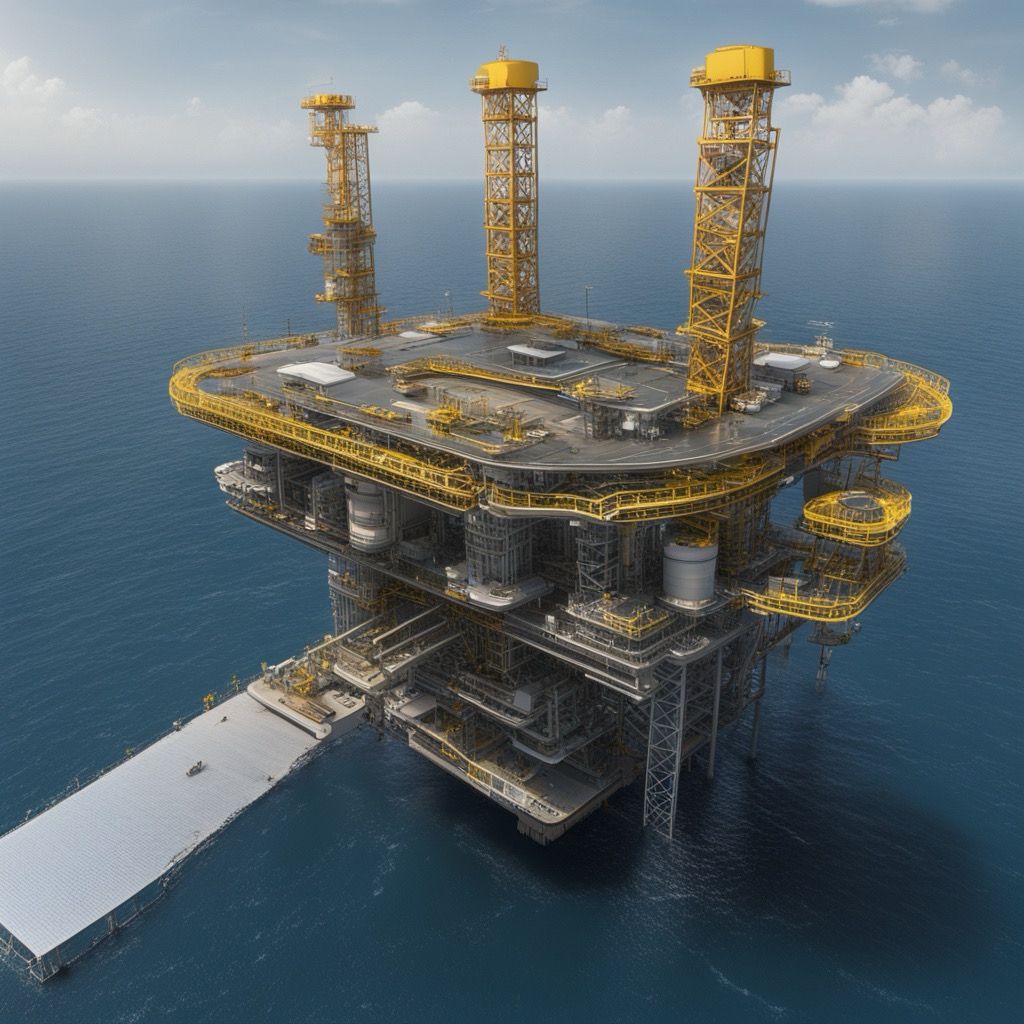Published: 6 months ago

Science
Summary
In the vast expanse of the world's oceans, lies a hidden treasure that fuels economies and powers nations - oil. The process of extracting this valuable resource from the depths of the sea is a complex and intricate operation that requires precision, skill, and cutting-edge technology.
Article
The journey begins deep beneath the ocean floor, where billions of years of geological processes have created vast reservoirs of oil. These reservoirs are often located miles below the surface, making them incredibly challenging to reach. But with advancements in drilling technology, engineers and technicians are able to tap into these reserves with remarkable accuracy.
The first step in the extraction process is seismic imaging, where specialized equipment is used to create detailed images of the subsurface geology. This allows geologists to pinpoint the location of potential oil reservoirs and plan the drilling operation accordingly.
A detailed image of a seismic imaging process showing sound waves penetrating underground layers to detect oil and gas reserves.
Next, a drilling rig is deployed to the target area, where a well is bored into the earth's crust. Advanced drilling techniques, such as directional drilling and hydraulic fracturing, are often employed to reach the oil reservoir and maximize production.
Once the well is in place, a complex network of pipes, valves, and machinery is installed to facilitate the extraction of oil. This infrastructure is designed to withstand the harsh conditions of the deep sea, including high pressures, corrosive elements, and extreme temperatures.
As the extraction process begins, oil and natural gas are brought to the surface through the well. These hydrocarbons are then separated and processed at an offshore platform, where they are refined into valuable products such as gasoline, diesel, and jet fuel.
But the extraction of oil from the sea is not without its challenges. Environmental concerns, such as oil spills and habitat destruction, are ever-present risks that must be carefully managed. Companies invest heavily in technology and training to prevent accidents and minimize their impact on the marine ecosystem.
Despite these challenges, the rewards of offshore oil extraction are undeniable. Oil production generates billions of dollars in revenue for countries around the world, supporting countless jobs and driving economic growth. In addition, oil is a critical source of energy that powers industries, transports goods, and heats homes.
The process of extracting oil from the sea is a marvel of modern engineering and ingenuity. It is a testament to the power of human innovation and the relentless pursuit of progress. As we continue to push the boundaries of what is possible, we can look forward to unlocking even greater potential from the depths of the ocean.
The extraction of oil from the sea is a vital and complex process that plays a crucial role in our modern world. It requires expertise, technology, and a commitment to safety and environmental stewardship. By harnessing the power of offshore oil reserves, we can drive economic growth, create jobs, and meet the energy needs of a growing population.
So the next time you fill up your car with gasoline or board a plane for a far-off destination, remember the incredible journey that each drop of oil has taken to reach you. From the depths of the sea to the palm of your hand, the story of oil extraction is one of ambition, perseverance, and the relentless pursuit of progress.
No opinions exist on this article yet!
Be the first one to share an opinion on this article.
This article does not have any attachments.
No Access
Share access to start recording your opinion








